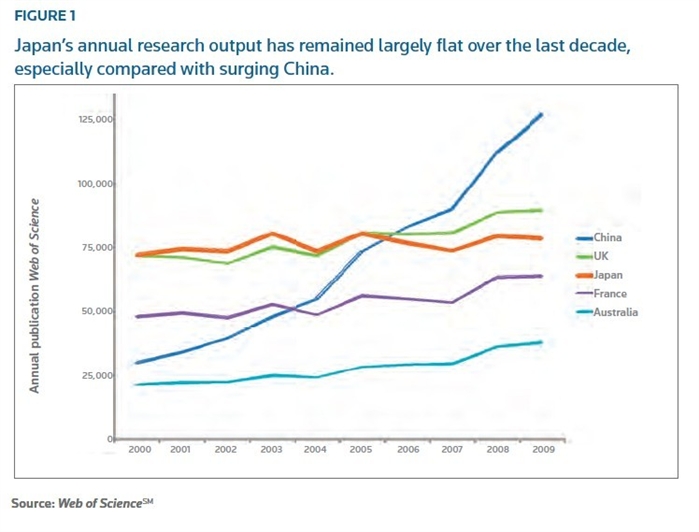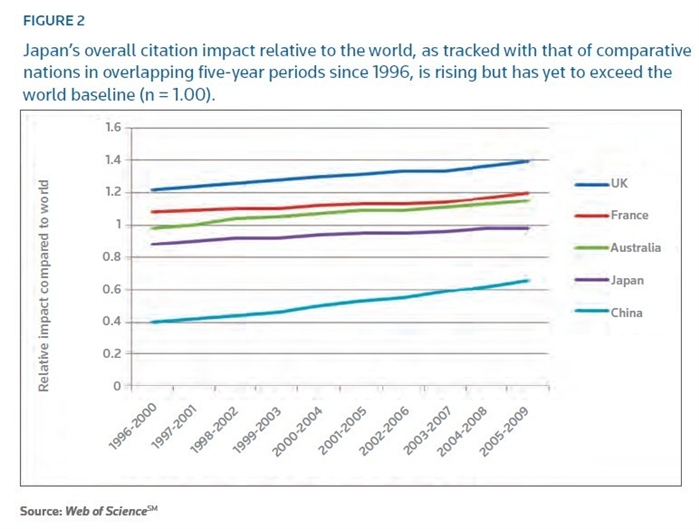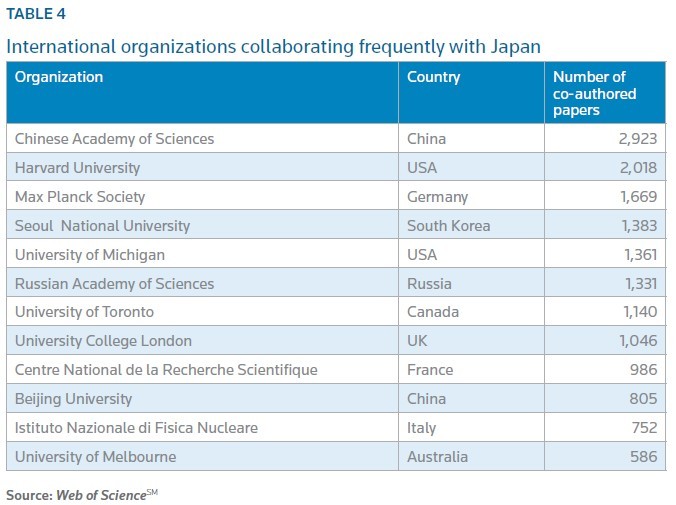博文
全球研发能力报告——日本篇(thomson )
||||
全球研发能力报告——日本篇
简单翻译,另附全文。
日本这个国家十分有趣,一方面在接近半个世纪的研究发展中它一直出于领先地位,开创了技术经济,而且是质量控制以及以客户为中心的制造等创新方法的践行者,而且它也具备了获得NOBEL和世界上其他重要科学奖项的能力。但同时,我们又很难解释“迷失的十年”以及日本在研发方面竞争能力整体的下降。
发现问题:
1. 利用引证数量,日本是十分稳定的,虽然也有增长。在许多技术领域它依然处于领先地位,但份额在下降。有一个明显得现象是,日本与其他G7国家相比,研发间的合作比较少,也不如他的近邻。
2. 给日本大学松绑,让其寻求更为多元的发展模式也许是一条很重要的政策手段。
3. 日本的研发职业需要进一步的融入的国际研发一体化的潮流中区。
SUMMARY
Japan is an intriguing research policy conundrum. The country has been a leading contributor to the development of modern science in many fields over half a century. It has invented a technology-based economy and become an exponent of innovative approaches to quality control and customer-focused product development. It has reached the very pinnacles of intellectual achievement in Nobel and other world prizes. It is therefore difficult to explain the “Lost Decade”, the underperformance in research and the relative fall in Japan’s overall competitiveness.
While citation counts are rising in most jurisdictions, and citation impact is rising markedly amongst Asian neighbors, Japan remains mostly static in its profile. In some fields where it had a leading position its share has fallen markedly. It is also noticeable that it is actually much less collaborative than other G7 nations or its regional partners.
The initiatives that we noted in the Introduction are a signal of the Japanese government’s awareness of the challenge, and of the risk that arises if the research base cannot help to lift social and economic innovation. The level of planned investment is considerable, and the freeing up of the Japanese university system to seek diverse solutions is an important policy move.
Japan may have been held back by the lack of nearby partners. Professor Ken-ichi Arai also suggests that Japan’s career tracks militated against international mobility and regional networks. Now Japan must take advantage of the opportunities on its door-step. The Asia-Pacific region is on course to be a powerful focus for the next phase of global research development. The Asian tiger economies have already shown one burst of innovation. Growth in China and India is on a massive upward trajectory.
The quality of research has improved markedly in some institutions across the Asia-Pacific region and that pattern is likely to become pervasive. The leading institutions will want to partner with established regional centers of excellence. Japan could benefit enormously in gaining access by joining with new partners with new ideas who are just a few hours’ flight away.
Is there a threat here for Japan? The lack of impetus in what has evidently been a very strong research base must be worrying for any policy maker. But regional diversification may be just the stimulus that is needed to rebuild the momentum that enabled Japan to do so well in the post-war period. There is no doubt about the national capacity for rapid and dynamic intellectual and technological advancement. The research challenges of disease, ageing, food security, information technology and social inclusion are all targets to which that capacity could be applied collaboratively with enormous mutual benefit across the region.




https://m.sciencenet.cn/blog-357889-370834.html
上一篇:做好专利分析的一点思考
下一篇:近期信息技术领域最值得关注的十项专利与十佳公司(基于专利评价